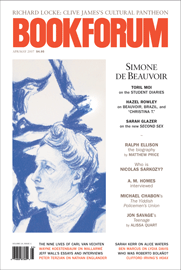
Ernest Jones had the urge to stand out. A small man, he learned early how to make himself visible through his bearing, his clothes, his mannerisms. And he learned how to distinguish himself—no ordinary Jones, he!—through the quality of his voice and intensity of his gaze. By the time he finished his medical studies and began a specialization in neurology, in 1902, he seemed poised for professional success and could boast of his “flair for rapid captivation of the opposite sex.” But Jones could also be abrasive if not boorish, and he soon discovered that he was not very popular among his more traditional colleagues. To treat the symptoms of hysteria in his patients, he used hypnosis, and after reading Freud’s case study of “Dora” in 1906, he turned his attention toward the maverick doctor in Vienna. He never looked back.
What did Jones see in Freud’s psychoanalysis? In Freud’s Wizard: Ernest Jones and the Transformation of Psychoanalysis, Brenda Maddox tells us that from early on “he wanted to learn how human impulses were controlled.” When we can neither control nor act on our impulses, Freud taught Jones, we fall ill. Psychoanalysis promised not happiness through the satisfaction of desire but stoicism built on acknowledging that we cannot always pursue what we deeply want. As Jones’s besotted and brilliant patient Joan Riviere put it after she herself became an analyst: “Once disappointment can be endured, desire diminishes.” Wishful thinking, perhaps.
Riviere’s notions about how to tame desire don’t seem to have been learned from Jones. He was forced to resign from his first hospital job in 1903 because of absences supposedly to visit a sick girlfriend. More seriously, the young doctor became embroiled in scandal when he was accused of “indecent assault” during his examination of a number of young adolescents at a London school for retarded children. They complained that he asked inappropriate questions, made advances, and left as proof of his behavior a stain on a tablecloth. Maddox notes that the case was “laughed out of court,” and that this time Jones’s male colleagues rallied round. In 1908, Jones was fired again, for talking about sex to a girl who seemed to be suffering from hysterical paralysis. Too much psychoanalytic sex talk for prudish Edwardian London or Jones’s own lack of sexual self-control? Maddox leaves the question open, but, for many readers the stain on Jones’s character will seem indelible.
Unable to find work in London, Jones left for Toronto. He was accompanied by his mistress, Louise Kann, a beautiful, wealthy Dutch Jew who pretended to be his wife. Freud analyzed “Loe” at his disciple’s suggestion four years later. Around that time, Jones began an affair with Kann’s maid, and Kann would leave him for a more reliable life partner, also named Jones. Freud sent Ernest for his training analysis to Budapest and Sandor Ferenczi, who at its conclusion expressed love for his patient and pupil, as well as hopes that Jones would “succeed in mastering his neurotic tendencies from now on.” This was typical of a psychoanalytic culture in which intellectual or personal disagreements often were reinscribed in psychopathological terms.
Along with Jung, Jones embodied Freud’s hope that psychoanalysis could spread beyond Central Europe and beyond the Jewish world. Maddox briefly describes the famous break between Jung and Freud in 1913, and she rightly notes some of the former’s bluntly anti-Semitic statements. But if Jung turned toward the Aryan archaic as an antidote to Freud’s emphasis on sex, Jones positively embraced his Jewish colleagues. He was the one gentile member of the secret “Committee”—Freud’s inner circle of analysts, dedicated to supporting the cause and one another. Having unsuccessfully courted Anna Freud, Jones married Kitty Jokl, a young Jewish intellectual who had been recommended to him as a secretary by a psychoanalytic colleague. When their first child was born, Jones opened his report to the Committee with the startling sentence “We are all good Jews.”
Jones’s combination of adulation and opportunism served the cause well. He was largely responsible for the Englishing of Freud and an indefatigable defender and explicator of psychoanalytic ideas and practices. He was key to the rescue of Freud (and many other analysts) from Nazi-dominated Europe in the late 1930s. The little man knew how to get things done, and he used his wits, charm, and energy in bringing the Freuds to England.
Jones’s greatest achievement turned out to be literary. His three-volume biography of Freud is a monumental statement of complex fidelity to the man and the cause. He weaves together the guiding threads of his hero’s life, and the result is a more human Freud, a portrait of a man and his ideas that compels interest and admiration. Later biographers have found fault with Freud’s Boswell, but none have replaced him.
Toward the end of her book, Maddox writes awkwardly that “the jury is still out on Ernest Jones, but it ought not to be.” Her excellent biography does not render a verdict, but it does show an energetic yet troubled man who managed eventually to find personal happiness and professional fulfillment. In his fifties, Jones returned to figure skating; he wrote the authoritative volume on the sport in 1931. The goal of skating, Jones writes, is “to acquire control over every fibre of the body. . . . The whole body responds with perfect harmony to the lightest expression of the will.” Skating promised Jones what Freud had taught him was impossible. He learned to live with that enigma.
Michael Roth, president of California College of the Arts, is author of Psycho-Analysis as History: Negation and Freedom in Freud (Cornell University Press, 1987) and editor of Freud: Conflict and Culture (Knopf, 1998).
